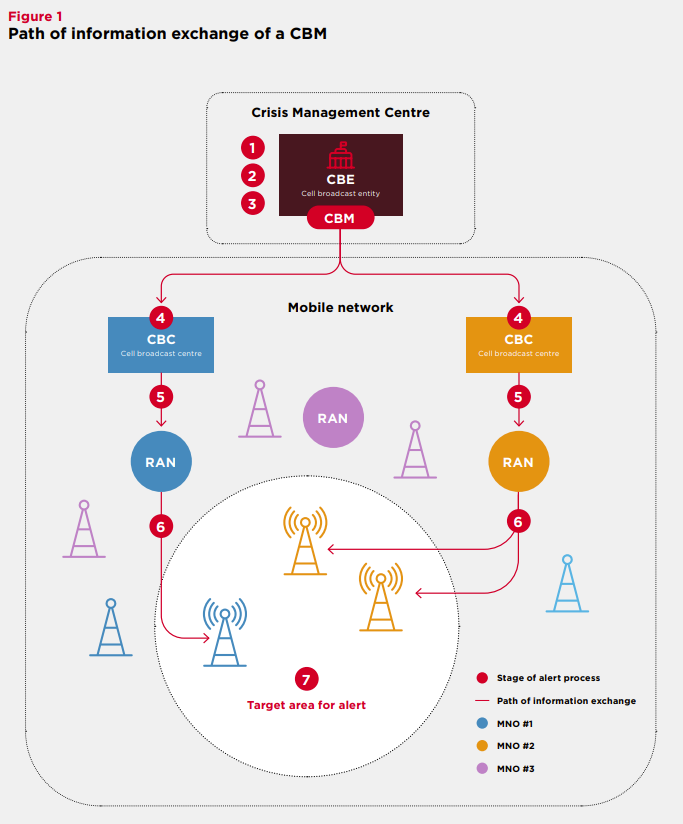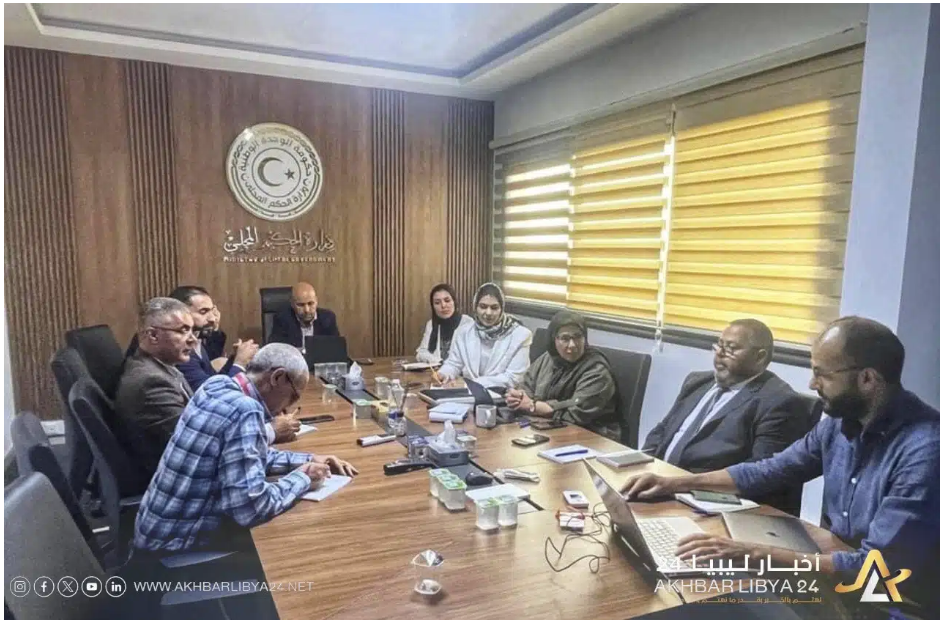Disclaimer:
Please be aware that the content herein has not been peer reviewed. It consists of personal reflections, insights, and learnings of the contributor(s). It may not be exhaustive, nor does it aim to be authoritative knowledge.
Title
Please provide a name for your action learning plan.
Strengthening Libya’s Preparedness: Launching a National Emergency Alerting System (NEAS)
Challenge statement
Challenge type: If you are working on multiple challenges, please indicate if this is your "big bet" or "exploratory" challenge.
Please note: we ask you to only submit a maximum of 3 challenges - 1x Big Bet, 2x Exploratory. Each challenge must be submitted individually.
BIG BET
Challenge statement: What is your challenge? (Please answer in specific terms: "Our challenge is that...”.)
Our challenge is the lack of a functional national early warning system in Libya. The
devastating floods in Derna and other natural disasters have revealed critical
gaps in preparedness and response coordination. We aim to address this by
implementing a National Emergency Alerting System (NEAS) using cell broadcast
technology. This system will enable targeted, rapid, and reliable dissemination
of alerts to mitigate risks, protect lives, and enhance national disaster
preparedness.
Background: What is the history of your challenge? What is causing or driving it? Who is involved? How does the current situation look like? What undesired effects does it produce?
Libya lacks an integrated early warning mechanism. Disasters, including recent floods, have
demonstrated the consequences of this gap: delayed evacuations, higher fatalities, and uncoordinated responses. The NEAS initiative builds on lessons from neighboring countries like Saudi Arabia and Oman, leveraging cell broadcast technology for geographically targeted alerts. This privacy-conscious approach requires no pre-registration, ensuring inclusivity and accessibility.
Key stakeholders include:
National Meteorological Center (NMC): Responsible for issuing alerts.
Libya Holding Company for Tele-Communications: Facilitates broadcasting alerts via telecom networks.
UNDP Accelerator Lab: Provides technical guidance, stakeholder
coordination, and advocacy.
Without NEAS, Libya remains vulnerable to future disasters, with significant socio-economic
and human costs.
Quantitative evidence: What (official) data sources do you have on this challenge that better exemplifies the importance and urgency of this frontier challenge? You can add text, a link, or a picture.
According to the GSMA Cell Broadcast Report (2023), cell broadcast has proven to deliver alerts within seconds, reaching millions efficiently.
Post-flood assessments highlight a lack of timely communication, contributing to over 11,000 deaths in Derna (OCHA Libya,
2023).
Qualitative evidence: What weak signals have you recently spotted that characterizes its urgency? Please provide qualitative information that better exemplifies the importance and urgency of this frontier challenge. You can add text, a link, or a picture.
Recent workshops hosted by UNDP identified cell broadcast as a critical tool for enhancing disaster response.
Stakeholder consultations revealed strong government and telecom sector interest in adopting this technology for public safety.
Value proposition: What added value or unique value proposition is your Accelerator Lab bringing to solving this challenge? Why is it your Lab that needs to work on this challenge and not other actors within UNDP, other stakeholders in the country respectively? Why is it worth investing resources to this challenge?
The UNDP Accelerator Lab in Libya is uniquely positioned to lead this initiative due to its expertise in innovation, collective intelligence, and partnerships. By integrating global best practices with local knowledge, we can prototype and scale the NEAS effectively.
Technical Expertise: Guiding the integration of cell broadcast technology with existing telecom infrastructure.
Stakeholder Engagement: Building consensus among government, private sector, and civil society.
Capacity Building: Organizing workshops to ensure seamless implementation and public awareness.
Short “tweet” summary: We would like to tweet what you are working on, can you summarize your challenge in a maximum of 280 characters?
📢
Libya's National Emergency Alerting System (NEAS) is launching! Using cell broadcast technology, NEAS will protect lives by delivering targeted, rapid emergency alerts. Together, we're building resilience for a safer future. 🌍
#Libya #EarlyWarningSystem #DisasterPreparedness
Partners
Who are your top 5 partners for this challenge? Please submit from MOST to LEAST important and state Name, Sector and a brief description of the (intended) collaboration.
Please state the name of the partner:
National Emergency Committee
What sector does our partner belong to?
Government (&related)
Please provide a brief description of the collaboration.
Building on Libya's lessons post recent crises and in response to recent discussions held during the International Day for Disaster Risk Reduction (DRR) workshop at the Ministry of Local Governance - National Emergency Committee, The UNDP Accelerator Lab in Libya proposes the National Emergency Alerting Service (NEAS), a solution designed to utilize Cell Broadcast technology. Notably, Cell Broadcast capabilities are already supported by Libya’s cellular networks, making it a highly feasible and compatible option for immediate implementation. This technology will provide geographically targeted alerts across the country, enhancing Libya’s disaster preparedness and aligning with recommendations from recent DRR-focused discussions.
Is this a new and unusual partner for UNDP?
Yes
Learning questions
Learning question: What is your learning question for this challenge? What do you need to know or understand to work on your challenge statement?
How can consultancy approaches and stakeholder engagement facilitate the efficient implementation of cell broadcast technology in Libya’s context?
What are the key technical and operational gaps, and how can tailored capacity-building initiatives address them to ensure nationwide coverage?
What strategies can be employed to promote digitalization adoption and foster public trust and awareness, ensuring the maximum impact of the National Emergency Alert System (NEAS)?
To what stage(s) in the learning cycle does your learning question relate?
Sense, Explore, Test
Usage of methods: Relating to your choice above, how will you use your methods & tools for this learning question? What value do these add in answering your learning question?
Consultancy and Stakeholder Engagement:
We will conduct structured consultations with government agencies, telecommunication providers, and emergency management stakeholders. These consultations will identify operational gaps, build consensus, and facilitate co-creation of actionable strategies. By leveraging diverse expertise, this method ensures that the NEAS is contextually appropriate and aligned with national priorities.
Digital Transformation Workshops:
Organized capacity-building sessions will focus on the technical and operational aspects of implementing cell broadcast technology. These workshops will equip stakeholders with the skills and knowledge required to adopt and manage the technology effectively.
Prototyping and Pilot Testing:
A pilot project will be launched to test the NEAS in a specific region. This iterative prototyping approach will allow for real-world testing of technology, uncovering potential challenges, and fine-tuning the system for broader implementation.
Awareness Campaigns:
We will design and execute public awareness initiatives to educate communities about the NEAS, emphasizing its benefits and building trust. Campaigns will utilize social media, community forums, and traditional media to maximize reach and engagement.
Existing data gaps: Relating to your choice above, what existing gaps in data or information do these new sources of data addressing? What value do these add in answering your learning question?
n/a
Closing
Early leads to grow: Think about the possible grow phase for this challenge - who might benefit from your work on this challenge or who might be the champions in your country that you should inform or collaborate with early on to help you grow this challenge?
Government Champions: Ministry of Telecommunications and Disaster
Management authorities.
International Partners: ITU and GSMA for technical support and
expertise.
Local Communities: Key to user feedback and public awareness
campaigns.
END OF ACTION LEARNING PLAN: Thank you! The form saves automatically and your submission has been recorded. You may now exit this window.


 9Industry, innovation and infrastructure
9Industry, innovation and infrastructure


 13Climate action
13Climate action
Comments
Log in to add a comment or reply.